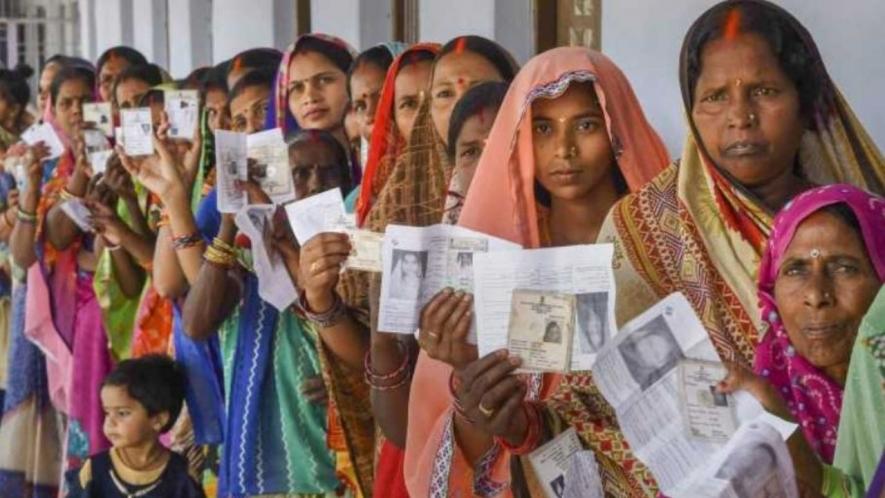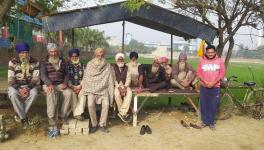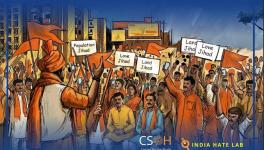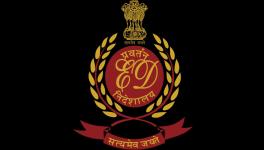Women Voters Hold Key to Power in 2022

Image credit: India Ahead
One of the most heartening developments in India’s democracy in recent decades has been the ever-increasing electoral participation of women and the rising impact of women voters. In 1962, for the first time, separate figures for male and female turnout were made available by the Election Commission of India. The men’s turnout was 63.31% and the women’s turnout was just 46.63%. By 2019, the women’s turnout had increased by 20.55 percentage points. Men’s turnout only witnessed a marginal increase – up by 3.71 percentage points. The year 2019 was an inflection point – it was the first instance of women’s turnout being higher than men’s turnout in the history of Lok Sabha polls. An even greater increase in women’s turnout has been witnessed in Vidhan Sabha or state Assembly elections. As per the ECI data, between 1962 and 2017/18, women’s turnout in state Assembly elections increased by a staggering 27 percentage points. Six states – Gujarat, Uttar Pradesh, Madhya Pradesh, Rajasthan, Punjab and Karnataka – had elections over these two years. It must be noted that the rise in women’s turnout has not been uniform across all states. In fact, in some states, there has been a slight decline in the turnout of women voters.
A common thread among the five states that go to polls this year is the rising turnout of women voters and their ever-growing assertiveness. Data from Trivedi Centre for Political Data’s (TCPD) LokDhaba: Indian Election Dataset shows how women’s turnout has risen in the five poll-bound states. In 50 years, the women's turnout in Uttar Pradesh has increased by 20 percentage points from 39% to 59%. During the same period, the female turnout in Punjab increased by 19 percentage points, while the male turnout in Punjab increased by just eight percentage points. In the hill state of Uttarakhand, in 15 years between 2002-2017, there has been a 17 percentage point increase in the turnout of women voters. The women's turnout in Manipur has increased by almost 14 percentage points from 67.99% in 1967 to 81.36% in 2017. Over the last five decades, the coastal state of Goa has seen women’s turnout rise by 16.52 percentage points.
Interestingly, in the last set of elections, in 2017, in all five states – UP, Uttarakhand, Manipur, Goa and Punjab – women’s turnout was greater than the men’s turnout. This is a trend that is likely to continue. In fact, there might be an even greater rise in women’s turnout and women are likely to have a great impact on the electoral outcome in these states.
However, a caveat must be added here. Though women’s turnout has increased in India, it does not mean that more women are voting than men, as India’s sex ratio is very poor. However, India’s sex ratio among voters has also improved. Sex ratio of voters (SRV) – the number of women voters to every 1,000 men voters – is another important metric for assessing the gender bias in electoral roles. Like the the population sex ratio (PSR), SRV is the number of female voters per 1,000 male voters who actually cast their vote. According to a study by Mudit Kapoor and Shamika Ravi, authors of Women voters in Indian democracy: A silent revolution, there has been a significant increase in India’s SRV from 715 in the 1960s to 883 in the 2000s.
How women voters have influenced electoral outcomes in recent times
A long-standing shibboleth about women voter’s behaviour has been that women in India rarely vote independently and most of them meekly surrender to the diktats or whims and fancies of their male family members while casting their vote. While this might have been true in the early days of India’s democracy, it is no longer the case. A survey conducted by Centre for Developing Societies (CSDS) for the 2014 elections revealed that 70% of women voters did not consult their husbands on whom to vote for. Prannoy Roy and Dorab Sopariwala who have been following India’s elections for decades, in their book The Verdict: Decoding India’s Elections, estimate that the number of independent-minded women voters could be significantly higher than is publicly admitted to a fieldworker – as high as 80%.
Given how differently and independently men and women vote, different levels of voting intentions between both are seen. This differential can be as high as 15% to 20% for a party. This gender differential in voting can completely turn an election. There is an interesting statistic that proves how much women voters can impact a party’s prospects. In the 2014 elections, NDA’s lead over the UPA among men was 19% points and among women the lead was just 9% points. A simple simulation of these results and voting pattern throws up two scenarios: If only men had voted, NDA would have won 40 seats more than what it won. If only women had voted, the NDA would have won 71 seats less than what it won – also 7 lower than the halfway mark of 272. (Source: The Verdict: Decoding India’s Elections and Exit + Post Poll + 2 Opinion Polls conducted in 2014 by Hansa Research Group for NDTV.)
With the rise in turnout of women voters and more women voters making independent voting decisions, parties and leaders are adopting different strategies to win the trust of women voters. Some recent examples of women voters influencing the final outcome are Delhi (2020), Bihar (2020) and West Bengal (2021) Assembly elections. In each of these elections, women voters played an important role in the re-election of the incumbent party/ government.
The Aam Aadmi Party’s landslide victory in the 2020 Assembly elections was driven by the overwhelming support it received from Delhi’s women voters. The Lokniti-CSDS post poll survey revealed that women were more likely to have voted for AAP than their male counterparts – 60% and 49% respectively. It was this massive gender gap that gave the party an almost unassailable lead of 25 percentage points over the BJP among the women voters. The AAP’s lead over the BJP among men was merely 6 percentage points. This remarkably contrasting voting pattern of men and women was seen across all castes, classes and age groups. It can be even argued that if women had not voted so overwhelmingly for the AAP, the party would have only managed a very narrow victory. The AAP government had gone hammer and tongs with its strategy to woo the female electorate. Delhi, under the Kejriwal dispensation, had become one of the earliest states to implement the central government’s 2012-13 guidelines on gender budgeting. Delhi’s gender budget in 2018-19 at 8.6% (of total budget) remained significantly higher than the Union government’s allocation at 5.1%. But the game changer was the much publicised free bus ride for women scheme announced just months before the elections. The CSDS survey showed that women from households that had availed the scheme were 42 percentage points more likely to vote for the AAP than BJP. On the contrary, the AAP was trailing by 3 percentage points among women from households that had not benefited from the scheme. The water/electricity bill subsidies, other freebies for women, the BJP’s pugnacious stand on the CAA-NRC protests in the capital made the AAP the go-to party for Delhi’s women.
In Bihar, the National Democratic Alliance (NDA) garnered 37.26% of the votes polled and won a narrow victory with 125 seats. Interestingly, out of these 125 NDA wins, 99 came from Assembly seats where the women’s turnout exceeded the male turnout. In 166 constituencies where the women’s turnout was more than the men’s turnout, the BJP-JDU won 92 seats and other smaller constituents of the NDA, the Vikassheel Insaan Party and Jitan Ram Manjhi’s Hindustani Awam Morcha, won seven seats. The Rashtriya Janata Dal-led coalition could only clinch victory in 61 of the 166 constituencies where the women’s turnout was higher. A phase-wise analysis of the Bihar verdict gives us a better understanding of how the women’s turnout influenced the outcome.
It becomes evident that after each phase, as the women’s turnout increased, the BJP-JD(U) went on consolidating their gains. In contrast, the RJD-led ‘Mahagathbandhan’ (MGB) that started the polls with a bang, saw its fortunes nosedive as the women’s turnout went on increasing after the first phase. But to conclude that the NDA was bailed out by women voters and Nitish Kumar could overcome anti-incumbency to win another term solely because of the higher women turnout will be erroneous. Closely contested elections like Bihar often lead to contrasting commentaries and explanations by political pundits.
The NDA and MGB’s contrasting fortunes in the last two phases can also be linked to the invocation of ‘Jungle Raj’ and the emotional appeal made by Nitish Kumar ahead of the second and third phases of polling. In fact, the final outcome may have been shaped by the interconnection of various factors—Nitish’s pro-women policies like 50% reservation for women in Panchayats, the bicycle scheme, benefits for girl students till graduation, 35% reservation for women in government jobs, the state and central government’s direct cash benefit schemes, liquor prohibition (despite flawed implementation) coupled with the fear of the return of ‘Jungle Raj’, and Nitish’s emotional pitch on this election being his ‘Antim Chunaav’.
Women voters do not vote en bloc
Women voters were also one of the reasons behind the Trinamool Congress party’s landslide victory in the 2021 elections. According to the CSDS post poll survey, among women, the TMC had a lead of 13 percentage points over the BJP. Among men, the TMC’s lead over the BJP was just six percentage points. However, contrary to the popular perception, women did not vote en bloc. The West Bengal election results showed that women do not vote en bloc or monolithically. In simple words, caste, class and religious identities also matter. Though the TMC led the BJP by 13 percentage points among women, the BJP had a whopping 18 percentage point lead over the TMC among OBC women. Even among Dalit women, the saffron party led the TMC by 15 percentage points. The BJP’s Hindutva pitch and allegations of corruption against the TMC seemed to have hurt the TMC’s prospects among Dalit and OBC women. Possible reasons for TMC’s good showing among women voters are the women-targeted welfare schemes like Kanyashree, Rupashree, the manifesto promise of monthly cash payments to women head of families and the TMC and Mamta’s stronger appeal among women voters.
The difference in voting patterns of women is also seen among different income groups. Poorer women – women who were primary beneficiaries of Mamata Banerjee government’s welfare schemes – were more likely to have voted for the TMC. Mamta Banerjee’s TMC had an 18 percentage point lead over BJP among poor women, 22 percentage points among lower class women but just three percentage points among middle class women. The BJP led the TMC by two percentage points among rich or upper class women.
How parties are wooing women voters in 2022
With the rise and rise of women’s turnout, parties and leaders can no longer afford to turn a Nelson’s eye to the needs and demands of women voters. As a consequence, parties are coming up with various schemes, strategies, and manifesto promises to win the trust of women voters. In this election season too, parties are going all out to woo women voters.
In the coastal state of Goa, which is also one of the states where there are more women voters than men, the incumbent BJP is relying on its cash transfer schemes like the Griha Aadhar Scheme and the Ladli Lakshmi Scheme to capture the votes of women voters. The party has also promised three free LPG cylinders to every household and home loans for at 2% interest for women. 33% reservation for women in the public sector and woman-only police station in every Taluka are some other promises made by the ruling party.
The Griha Aadhar Scheme provides Rs 1,500 per month to any married woman with an annual income less than Rs 3 lakh. The Aam Aadmi Party has promised that the amount under the scheme would be hiked from Rs 1,500 to 2,500. It has also promised to provide Rs 1,000 per month to all women above the age of 18. But the biggest promise has come from new entrant Trinamool Congress which has announced the launch of its Griha Lakshmi Card under which one woman from every house will receive Rs 5,000 irrespective of their monthly income. The Congress has promised to reserve 30% government jobs for women.
In Uttarakhand, the Aam Aadmi Party which is making its electoral debut in the hill state has promised to provide Rs 1,000 to women above 18 years of age. To reach out to women voters, the incumbent BJP has made promises of financial assistance of Rs. 40,000 to pregnant women and Rs 500 per month to women head of poor families. The party has also said that if re-elected it will set aside Rs 500 crore for Women self-help groups. Just like Goa, the party has made a promise of providing three free LPG cylinders. Months before the polls, the government launched the CM Ghasiyari Yojana under which the women in the hills are provided with a kit to gather fodder. In its manifesto, the Congress has made a number of promises to attract women voters: free public transport for women voters, capping the price of LPG cylinders to Rs 500, 40% jobs for women in the police force and a a 150% increase in the salary of anganwadi workers in the state.
The National People’s Party, in its manifesto for Manipur, has said that if voted to power it will extend the maternity leave to nine months, provide zero interest loans to women SHGs and set up a Gender Justice Commissions for the LGBTQIA (Lesbian, Gay, Bisexual, Transgender, Queer, Intersex, Asexual) community to address their concerns comprehensively. The Congress, the principal opposition party in the state, has said that if elected it will reserve 33% government jobs for women. The ruling BJP has extensively focused on women voters and the party’s trop brass has instructed party workers to reach out to women voters with work done by the state and Central government in the state. Interestingly, in January, Sharda Devi, the first woman state president of the ruling BJP in Manipur had said that the party will try to field 33% women candidates in the state. However, the final list of the party has just 3 (5%) women candidates.
In Punjab, when the AAP announced its decision to give Rs 1,000 to every woman if the party won Punjab, Congress leader and PPCC chief Navjot Sidhu had called dubbed the announcement as “lollipop” and “alms'' and accused the AAP of making false promises. A month later, doing a volte face, Sidhu announced a number of freebies for women voters: Rs 2,000 per month and eight gas cylinders a year to home-makers, electric scooters and Rs 20,000 for Class XII pass girl students taking admission in colleges for further studies, Rs 15,000 to the girls passing Class X, and Rs 5,000 to those passing Class V.
Last year, the Congress had set the cat among the pigeons when it announced that it will be fielding 40% women candidates in the Uttar Pradesh polls. The Grand Old Party has pinned its hopes of revival in the state on women voters. The party’s face in the state Priyanka Gandhi Vadra has held a series of events to reach out to the women in the run up to the polls and also made a number of announcements reaching out to them: 40% reservation in government jobs, deployment of women constables at every police station, preference to women in MNREGA jobs, setting up of ‘Mahila Chaupals”, free gas cylinders, a hike in the wages of ASHA and Anganwadi workers. Not to be left behind, the BJP is also reaching out to women voters in the states and banking on a series of women centric welfare schemes to win their vote. The party has promised a Rs 25,000 grant for poor girls’ marriage and allocation of Rs 5,000 crores for women SHGs. The saffron party has also promised Rs 1,500 monthly pension to destitute women. As a part of its outreach programme to reach out to women voters, the BJP has formed Kamal Saheli clubs and organised Mahila Sammelans
The main rival to the BJP in UP, the Samajwadi Party is also actively targeting women voters. SP supremo Akhilesh Yadav had even said that in “new SP”, M-Y (a reference to the Muslim-Yadav combine that has been associated with the party) stands for Mahila and Yuva. 33% reservation for women in jobs, a helpline for women, free education from the KG level to Master’s, revival of the the Kanya Vidya Dhan Yojana under which girls after will be given a lump sum amount of Rs 36,000 passing class 12 and “Samajwadi Pension Yojana” under which BPL women would get a pension of Rs 18,000 per year are the promises made by the party.
With the rise of women’s turnout, parties have been forced to cater to the needs and demands of women voters. While women voters and their issues have taken centre-stage in the run-up to the polls, it is to be seen if the promises, sops, freebies announced by political parties are actually implemented or delivered after the results are announced.
The author is a freelancer based in Bombay and an alumnus of Mumbai’s St. Xavier’s College. His interests vary from politics, psephology, and journalism to regional Indian cinema. He tweets @Omkarismunlimit
Get the latest reports & analysis with people's perspective on Protests, movements & deep analytical videos, discussions of the current affairs in your Telegram app. Subscribe to NewsClick's Telegram channel & get Real-Time updates on stories, as they get published on our website.
























